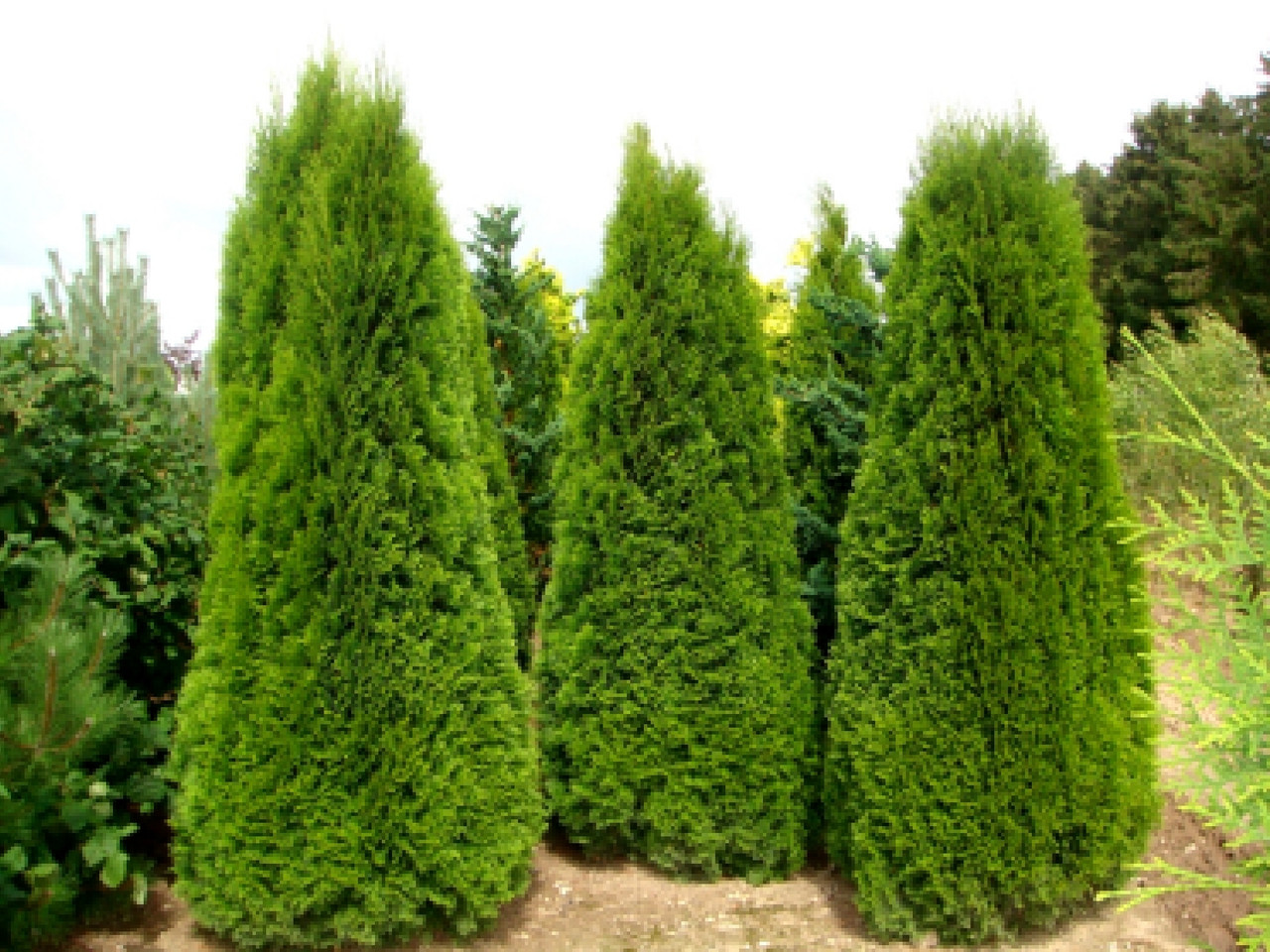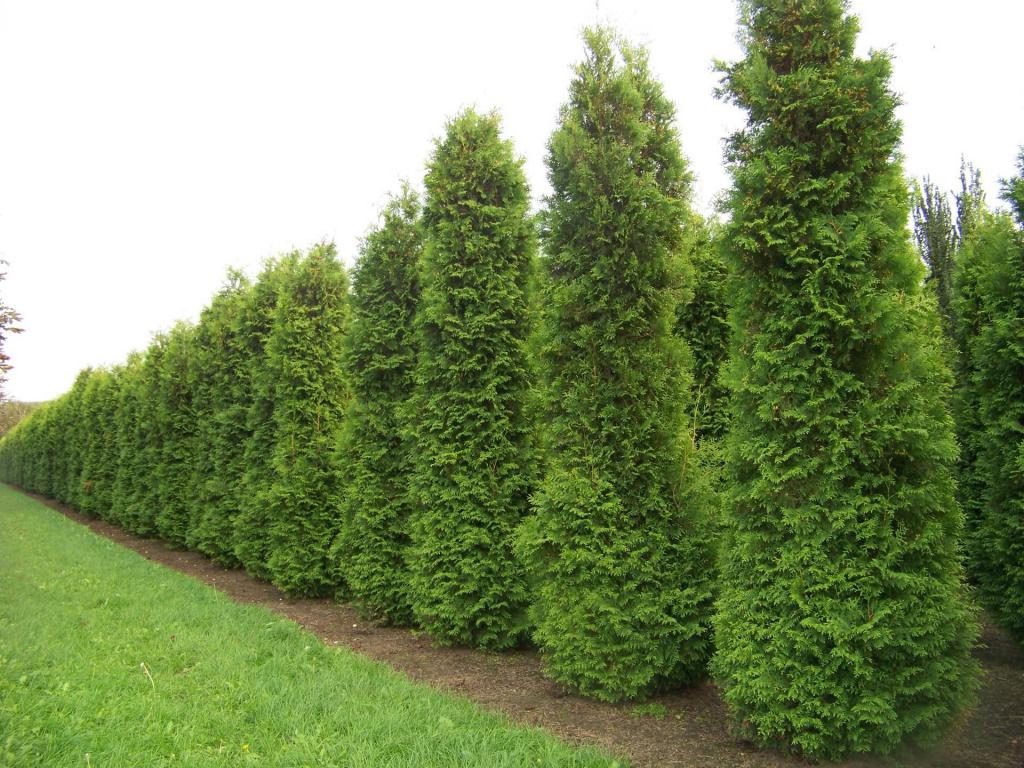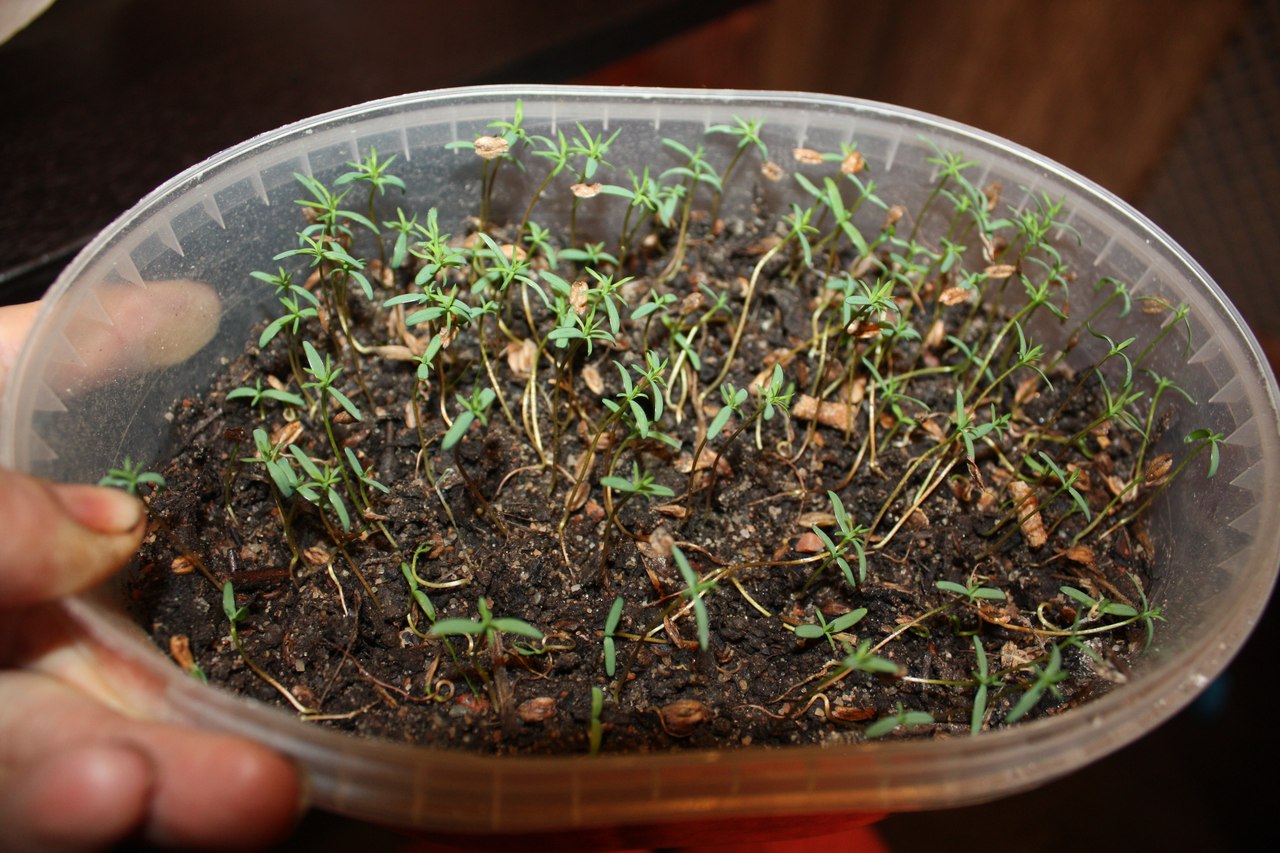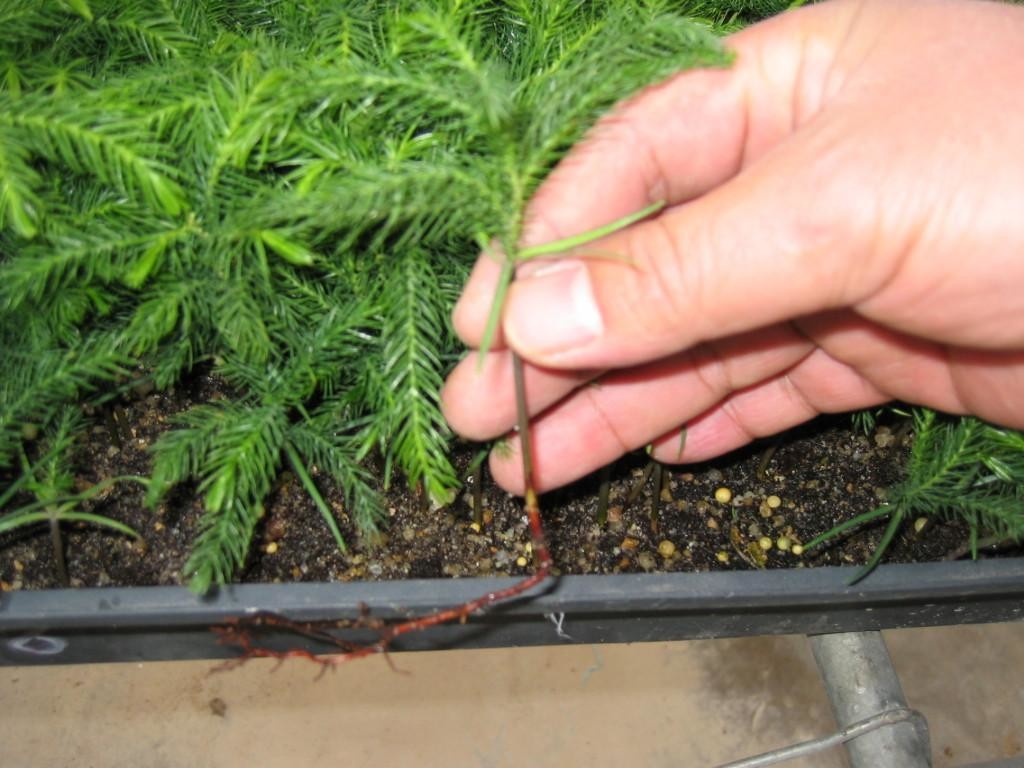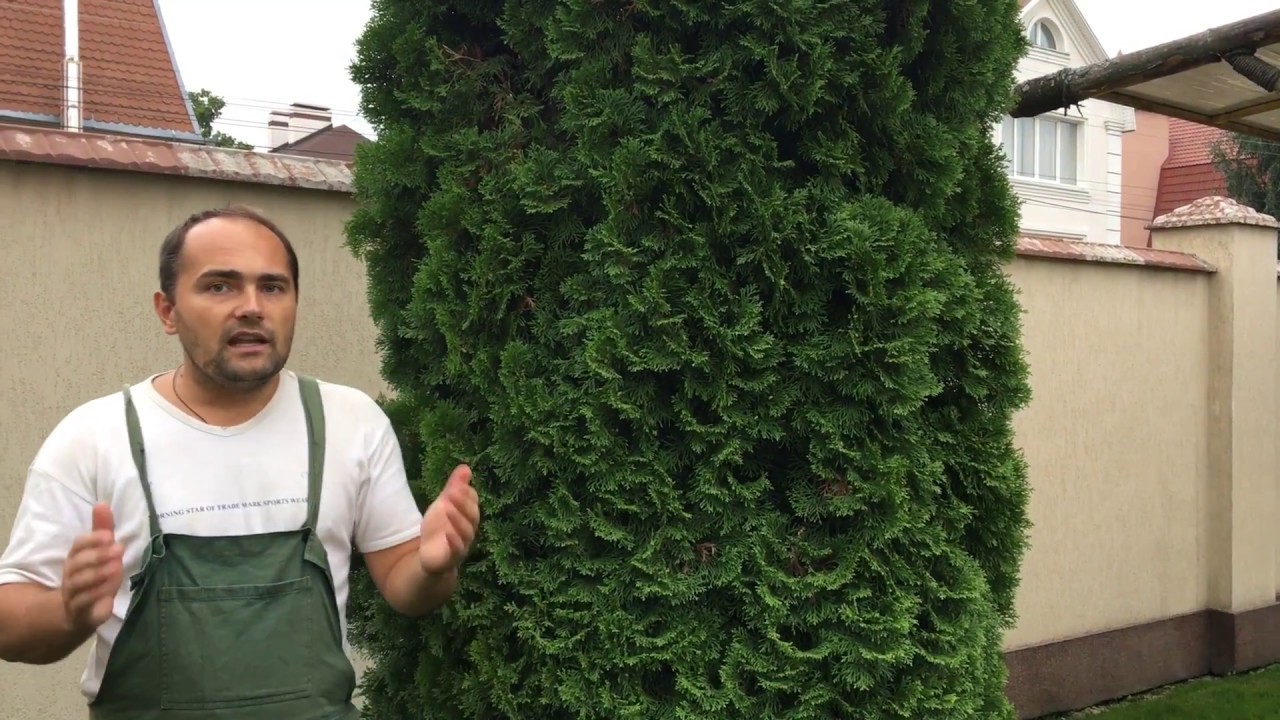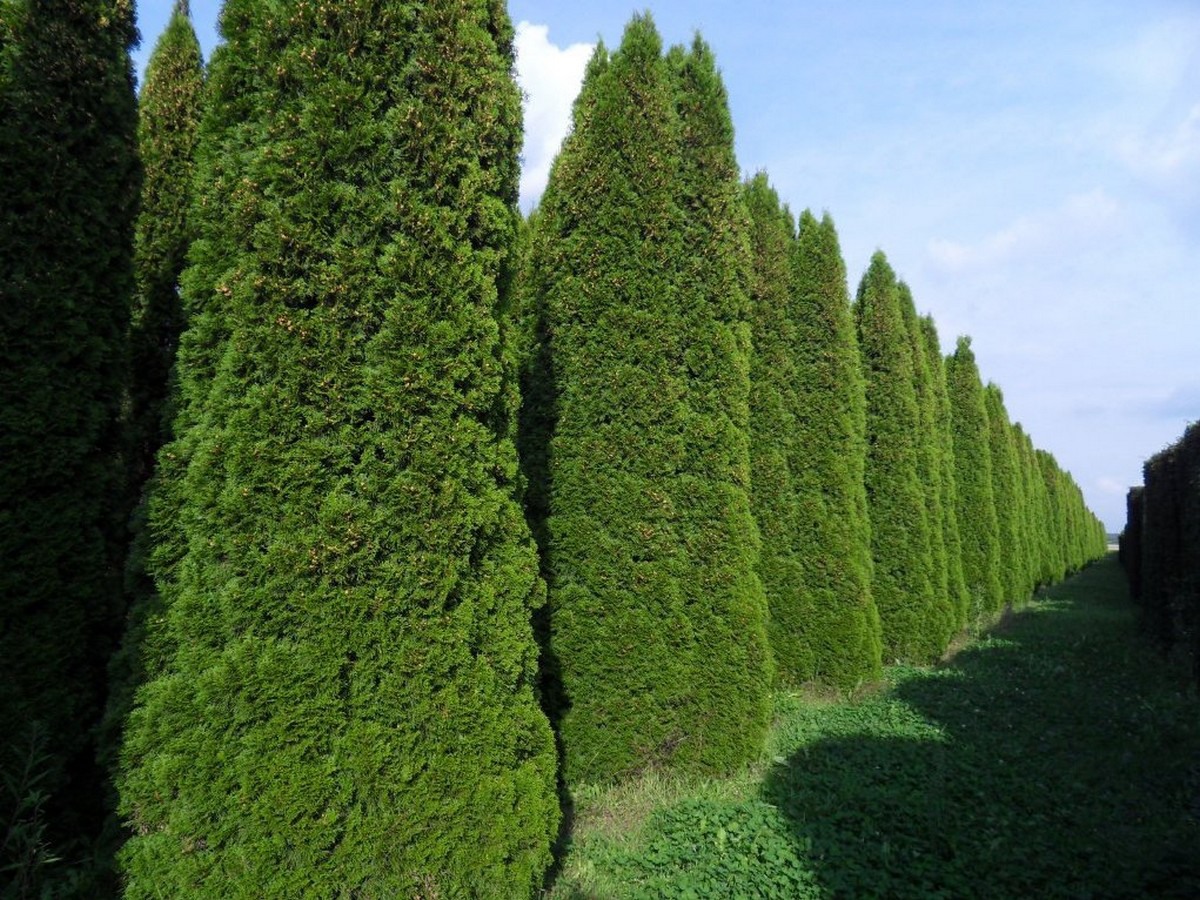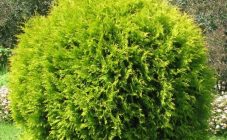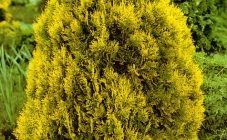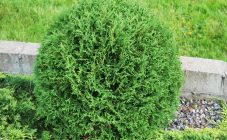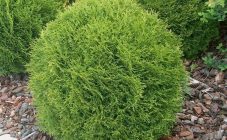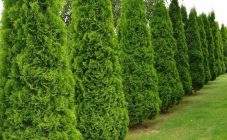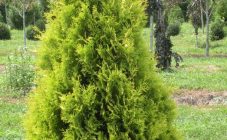Content:
Landscaping is rarely complete without evergreens. One of the most popular is thuja Smaragd. The western thuja Smaragd belongs to the Cypress family. Tuya Smaragd, the description of the appearance of which is similar to an oblong cone. The dense coniferous cover and pronounced crown make the thuja a favorite plant of landscape designers.
The thuja hedge looks good. Thuja Golden Smaragd looks especially impressive, the description of the shoots of which is yellowish-green in color. The plant reaches a height of 4-6 meters. In the absence of processing, the crown in width can reach 2 meters. The average growing time is 100-130 years. The growth rate is noted on average 20 cm in height and 4-5 cm in width per year. Thuja Smaragd is well adapted to subzero temperatures. Requiring minimal maintenance, the tree blooms with small brown cones. The tree is also valued for its ability to purify the air, saturating it with phytoncides. Correct adherence to the regulated standards of care and maintenance will allow you to grow a healthy and beautiful plant.
Agrotechnics of culture
Thuja western Smaragd prefers sunny areas, although it tolerates moderate shade well. In conditions of shade, the plant is characterized by slower growth and weak crown formation. Tui western Smaragd planting and care in the open field have a special specificity. It is better to choose light peat or clay sandy loam as a soil. The pH values should be in the range of 4.5-6 units.
Thuja Smaragd has good frost resistance. This quality makes the plant attractive for growing in conditions with severe frosts in winter.
A competent irrigation regime is important for thuja. During dry periods, the frequency and abundance of watering should be increased. It is necessary to carefully look after the condition of the soil. Excessive prolonged dampness can damage the root system.
You can maintain optimum soil layer performance by mulching around the trunk with peat, sawdust or fallen leaves.
The root system of thuja Smaragd does not extend in depth. This superficial arrangement of the roots imposes restrictions on the loosening process. Do not work the soil deeper than 10 cm from the surface.
Bloom
The flowering period of thuja Smaragd begins in April and lasts until May. The opening of the kidneys begins 10-12 days after the establishment of the average daily temperature at the level of 10 ℃. Flower buds are located in the leaf axils at the tops of the lateral shoots of thuja.
Flower buds begin to form after the end of shoot growth in September - October. As a wind-pollinated plant, thuja produces large amounts of pollen. Pollination is possible when neighboring flowers are close.
Self-pollination of thuja Smaragd is complicated by the location of male and female flowers on the same tree. The males are at the bottom and the females are at the top of the crown. Female flowers are similar to buds of yellow-green color, male flowers are rounded, brown-yellow.
To maintain the thuja during the flowering period, you can treat it with Epin's solution. The lack of flowering can be caused by alkalization of the soil layer.You can restore the acid-base balance by introducing peat.
To prevent the appearance of pests on weakened trees, you can treat a flowering plant with a fungicidal solution.
Suitable neighbors for thuja
You can plant thuja Smaragd next to any coniferous plant, for example, juniper, spruce and pine. Thuja grows well next to barberry and vesicle.
Almost any plant can be planted next to thuja, be it flowers, shrub forms or trees. When choosing neighbors, one should rely on the need for thuja in the level of illumination and features of the root system. Plants with the same superficial root system are not suitable for close planting. This neighborhood will lead to the emergence of competition for water resources. You should also take into account the thuja's love for soil acidification, so it is better to plant nearby plants that prefer a slightly acidic soil reaction.
Seed propagation
Seed propagation is a lengthy process that allows you to get a large number of home seedlings, since purchasing them in nurseries is not a cheap pleasure. In the first year, the seedlings grow 7 cm in height, after 2 years - 50 cm, in all subsequent years the average annual growth will be 30 cm per season.
Seeds ripen in cones in late August - early September. You need to collect them until the cones are fully disclosed. Collected buds should be laid out to dry in a dry place. After opening the cones, the seeds will spill out freely.
It is recommended to sow thuja seeds in autumn, since during spring sowing, it becomes necessary to carry out stratification with a low temperature. The natural process of stratification increases the chances of germination, the seedlings appear earlier and better adapt to wintering.
Thuja seeds can be planted directly in open ground, but for convenience it is better to plant them in a box. The soil mixture should consist of turf, peat and sand in a ratio of 1: 2: 0.5. The soil layer should be 2-3 cm lower than the edge of the side of the box. The distance between adjacent grooves should be at least 5-6 cm. Having evenly placed the seeds, it is necessary to cover them with 1 cm thick soil. Next, it is necessary to water the crops with a spray bottle to prevent the seeds from floating up.
It is better to place the box outside under the crown of trees, covering it with an additional non-woven material. In the process of snow melting, it is important to ensure that the cover does not touch the soil surface. After 2-3 weeks, while maintaining the soil temperature of 10-15 ℃, the first thuja seedlings will appear.
Every 14 days, it is necessary to feed the seedlings with a complex mineral fertilizer containing nitrogen, phosphorus and potassium. "Dissolve" and "Agricola" have proven themselves well. In the first season, thuja Smaragd will grow by 7-8 cm, such seedlings should be left for the winter in a box.
A year later, young plants can be transplanted into a school according to a 30x30 cm scheme. Humus, nitroammophoska and ash should be added to the selected area.
Propagation by cuttings
Growing thuja from a cutting is the most optimal process. This ensures that the desired variety will grow. When buying a cutting, you need to pay attention to the condition of the needles. It should be fresh in appearance with a rich, bright color. The root system should be well developed, free from damage and slightly moist.
You can cut a stalk yourself from a two-year-old thuja shoot. The length of the original branch should be about 12-15 cm with a diameter of 0.5-1 cm. After that, you need to shorten the cutting to 5 cm, cutting at an angle of 45º. Bark and foliage should be removed from the bottom, leaving leaves only at the tip of the shoot. The resulting stalk must be placed in a container with water.
Prepare pots for cuttings by filling them with vermiculite, sand and compost. The resulting mixture must be slightly compacted, leaving 3-5 cm of the pot not filled. The tip of the cutting can be dipped in growth hormone solution and placed gently in the pot. After sprinkling with soil, you need to compact the soil around the future trunk. After finishing the planting process, the soil should be watered abundantly.
It is better to plant a rooted stalk with the onset of spring. The end of May - the beginning of June is the optimal landing time.
For the future tree, a planting pit should be prepared, 1 meter deep. Its diameter should quietly include the entire root system. The excavated soil must be mixed with turf, deciduous soil and peat. Enhancing the initial growth will allow the introduction of compost or manure.
The addition of sand contributes to better water and air permeability. The addition of wood ash and mineral fertilizers to the bottom of the pit will also have a beneficial effect on growth.
After applying all the fertilizers, you need to moisten the pit abundantly. Gently lowering a thuja seedling or a stalk with a root lump of earth, it is necessary to carefully and carefully tamp the soil.
Culture care
An important aspect of thuja care is watering. In the event that the groundwater is located close to the surface, watering should be carried out no more than 1-2 times a month. If the waters are at great depths, then watering should take place once a week. More frequent soil irrigation is necessary on hot and dry days.
In addition, at noon, the crown of the thuja should be covered with a non-woven material to protect it from scorching rays and prevent an increase in temperature. Sprinkling will help to survive the hot period. Crohn, thanks to such procedures, will grow more intensively and will have a more well-groomed appearance. The maximum effect can be achieved by adding a growth promoter to the spray water.
In preventive measures to reduce the risks of the disease, it is necessary to treat the milk with fungicides 3-4 times per season.
The introduction of complex organomineral fertilizers every spring contributes to the active growth and development of thuja. In spring, any complex fertilizer preparations are suitable for feeding (for example, Kemra-Universal in a proportion of 50-60 grams per 1 square meter). To enhance growth, you can use a nitroammophoska at the rate of 100 grams per adult plant. Protection of the root system in hot weather is facilitated by the formation of a mulched layer of peat, 5-8 cm thick, on the soil around the tree.
After coming out of hibernation, it is imperative to remove all diseased damaged branches from the thuja. With a frequency of 2-3 years, it is necessary to carry out sanitary pruning, shortening the shoots by 1/3. This measure stimulates more active growth and the formation of a lush crown.
Autumn care
At the end of August, the application of nitrogen-containing fertilizers should be abandoned, thus, thuja Smaragd will slow down growth and prepare for hibernation. With a sharp pruner treated with disinfectants, it is necessary to cut off old shoots, preventing thickening inside the crown. In addition, you need to cut off the yellowed twisted shoots.
To strengthen the root system of thuja for winter, you can feed the plant with root formation stimulants, for example, Kornevin. The drug should be diluted according to the manufacturer's instructions and applied at the root before frost.
Maintaining constant soil moisture is an important step in the fall. Abundant watering is absolutely necessary before the onset of cold weather.Moistened soil is much less prone to freezing. Watering in this mode is necessary from the moment the leaves fall from deciduous trees.
For well-mulched adult thuja plants, there is no need for abundant watering. This measure is mandatory for young tui.
Young immature plants need to be secured from the effects of winds. To do this, after watering, you can install a rod or a post and tie a rope around the tree trunk, having previously tied the trunk with a cloth to avoid chafing the twine.
Mulching is a must to maintain soil moisture. Peat, fallen leaves, pine bark are optimal materials for mulch. The thickness of such a layer should be 5-7 cm. With the onset of spring, the mulch should be raked, allowing the soil to warm up faster.
Despite the good frost resistance, young thuja must be prepared for wintering. It is necessary to cover the tree with burlap to prevent sunburn in early spring. Burlap allows the wood to "breathe", protecting it from frost.
In areas with cold winters, it is better to use non-woven fabric such as agrofibre or lutrasil. It is necessary to form a cone from the crown of a thuja, the sharp end directed upwards. This will prevent the accumulation of snow and breakage of the shoots.
After covering with burlap, you can wrap the plant with rope several times to strengthen the cover from gusts of wind.
You can also build a frame around the thuja and stretch a non-woven material over it, protecting it from strong winds and sunburn.
Summing up, we can say that by growing the western thuja Smaragd, you can revive and decorate the garden plot with an original hedge. Thuja, which does not require special care, gets along well next to many ornamental plants. However, it is necessary to follow certain rules of care and watering in order for the thuja to please with its appearance for many years.
